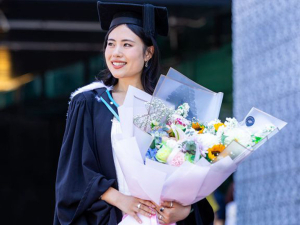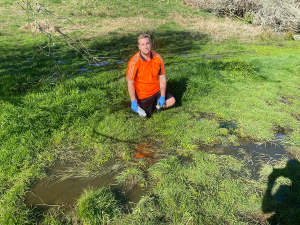The use of wearable electronic monitors on the country’s dairy herds is rapidly increasing, according to DairyNZ polling.
DairyNZ senior scientist Paul Edwards says DairyNZ runs five-yearly surveys on technology trends. Wearables uptake has been historically slow but this year the survey found a large increase in adoption, and about a third of dairy farmers now have wearables on their wish lists.
Speaking at the recent Spring Focus Day on the Lincoln University Dairy Farm, Edwards said the question was how to maximise the value of the data that wearables provide.
He outlined recent research into using wearables for grazing management – whether cow activity, as detected by wearable devices, can potentially be used to assess feed uptake and availability.
He said wearables are typically just used for animal health monitoring such as heat detection or health alerts.
“But it does represent a really large pool of data that potentially we could be doing other things with.”
Edwards outlined a controlled grazing experiment at the Ashley Dene research farm, carried out under the NZBIDA collaboration between AgResearch, Fonterra and DairyNZ.
Four small herds of cows were fed differing amounts of pasture over four five-day periods, alternating between pastures estimated to offer 80%, 100% or 120% of their requirements. The trial was repeated in Spring and Summer.
Edwards explained that the pasture estimates were “within the range of subjectivity” but the idea was to see if wearables data could provide a non-subjective near real-time indicator of feed availability.
Every cow carried five different wearable devices – IceQube, CowManager, AfiCollar, eShepherd and smaXtec – giving different combinations of metrics including steps, active time, lying time, rumination time and rumen temperature.
Edwards said that people might instinctively assume eating time was a good measure of how the animal is interacting with the pasture, but rumination time turned out to be a much more useful behaviour.
“So as an individual predictor, rumination time was the strongest behaviour in terms of predicting those pasture metrics, which was not anywhere near as strong for eating time.”
Post-grazing residual, rather than pre-grazing availability, was the best predicted measure.
However, there was still “a lot of noise” in the data.
Edwards said it was a successful proof of concept but the next steps would be determining what value is in it and how might farmers use that data to change their decision making.
Meanwhile, LUDF has markedly improved its empty rate partly due to its use of monitoring collars.
Farm Manager Peter Hancox told the Focus Day that the Not In Calf (NIC) rate went from an historic high of 18% to just 12% for the 2022 Spring.
The key changes were extending mating by 2-3 weeks beyond the farm’s usual 10 weeks, using ultra short gestation semen for the tail end, and using the collars to identify matings and monitor cow activity.
Interventions informed by the collar data were credited with more than half of the improvement in NIC rate, the rest being attributed to the longer mating.
Hancox said the cows were fitted with Allflex collars at the beginning of last lactation.
The key thing they did was help identify phantom cows that had been inseminated, failed to get pregnant but then failed to start cycling again.
They would show up on the collar data as being in calf but scanning then showed they were empty. They were then administered PG (prostaglandin) and inseminated again.
“We pretty much got every single one of those cows in calf,” said Hancox.
The farm administrator, Jeremy Savage, called the improvement “huge”. Counting all the costs of getting in replacements a 5% improvement in the in-calf rate knocks about 20 cents a kilo off a farm’s cost structure, he said.
Hancox added that the longer mating did mean a slightly longer calving, with the last due to about October 15.
“So it hasn’t made too much of a tail - a wee bit but not too bad.”


















